Get a Grip: The Ultimate Guide to Fasteners
by Marisa Kenyon
The year is 1900: Your average clerical office is one large room packed tightly with roll-top desks and a large, metal copying press sits in the middle. You can hear the fluttering of papers, the slamming of ledger books, and the click-clacking of a dozen typewriters going at once. Amongst this antiquated scene is something quite modern-looking, and you could be forgiven for thinking that it didn’t belong - I am talking, of course, about the humble paperclip.
Since its introduction in the 1890s, the “Gem” clip has been a staple in offices around the world; It allows for papers to be organized securely without the need for pins that would permanently damage the documents they held.
Ad for Gem Paper Clips, 1893 [1]
The tension of the Gem paper clip was just right to hold papers together firmly without creasing. Many other designs were introduced before and after, including some we would still recognize today - like the butterfly clip - but none have the same utility as the patented ‘three-curve’ Gem.
Let’s take a look at some common fasteners, and when to use them:
Paper Clips
Cheap, infinitely recyclable, and near ubiquitous – paper clips come in a variety of shapes and sizes, and can be used to hold documents large and small
Use non-skid paper clips for a firmer grip, but be wary of important documents as they may catch and tear.
Colorful clips can help make visual organization easy – dedicate your colors to different document types, or differentiate between what is ‘done’ and ‘to-do’ at a glance.
Try Plastiklips to indicate towards certain parts of a document, such as a signature line.
Ideal Clamps/Butterfly Clips
Although not as common as standard paper clips, butterfly clips are made of the same steel wire construction bent into a wider shape.
The design of the butterfly clip creates less tension, making it a ‘tear resistant’ alternative.
Can be used for bookmarking pages, as it lays flatter than a traditional paper clip.
Folded arms prevent tangling with other clips, particularly when using a paper clip dispenser.
Binder Clips
Larger and stronger than paper clips, binder clips are a versatile fastener that can do everything from securing a stack of paper to acting as a clothespin.
Like paper clips, binder clips come in a variety of colors that can be useful for organization - unlike paper clips, however, binder clips have a handy ‘face’ that is large enough to hold a label or sticker to make sorting through files even easier.
Use jumbo binder clips as a quick (and cheap) way to manage loose cables
Because binder clips have more tension than your typical paper clip, be careful when removing – ensure that the clip is completely open and do not drag it along the paper to prevent tears.
Self-Adhesive Fasteners
Metal prongs that can be affixed inside of a folder or binder to keep loose papers from falling out or becoming disorganized.
Useful for subdividing documents within a presentation folder - because they can be placed anywhere, it is easy to keep important documents front and center, or layer them for quick reference.
Self-adhesive fasteners can also be attached to personal planners or folios to hold writing utensils - simply roll the metal prong over the pen or pencil until it is snug.
Unlike the clips mentioned above, these fasteners do require that holes be made in the paper, so they are not recommended for original documents.
Prong Fasteners
Securely bind large piles of paper for archival or presentation; Align your papers through the prongs of the base, and use the fastener to compress and secure them together.
Like self-adhesive fasteners, prong fasteners utilize a two-hole punch at the top or side of the page, and so should not be used with documents that cannot be damaged.
Most prong fasteners can hold over a hundred sheets at a time, making them a cheap and practical way to secure large projects.
For a makeshift clipboard or presentation board, fasten a piece of cardboard to the prongs first, and display your documents against the cardboard.
Since the early days of office organization, document fasteners have evolved from a handful of crude pins to dozens of varieties in every size, shape, and color. From the iconic Gem clip to modern innovations, each type offers unique advantages for keeping papers organized. Whether it's using binder clips for heavier stacks, or self-adhesive fasteners for quick organization, these tools continue to play a vital role in streamlining work processes.
[1] https://brian.carnell.com/articles/2021/gem-paper-clip-ad-1893/


